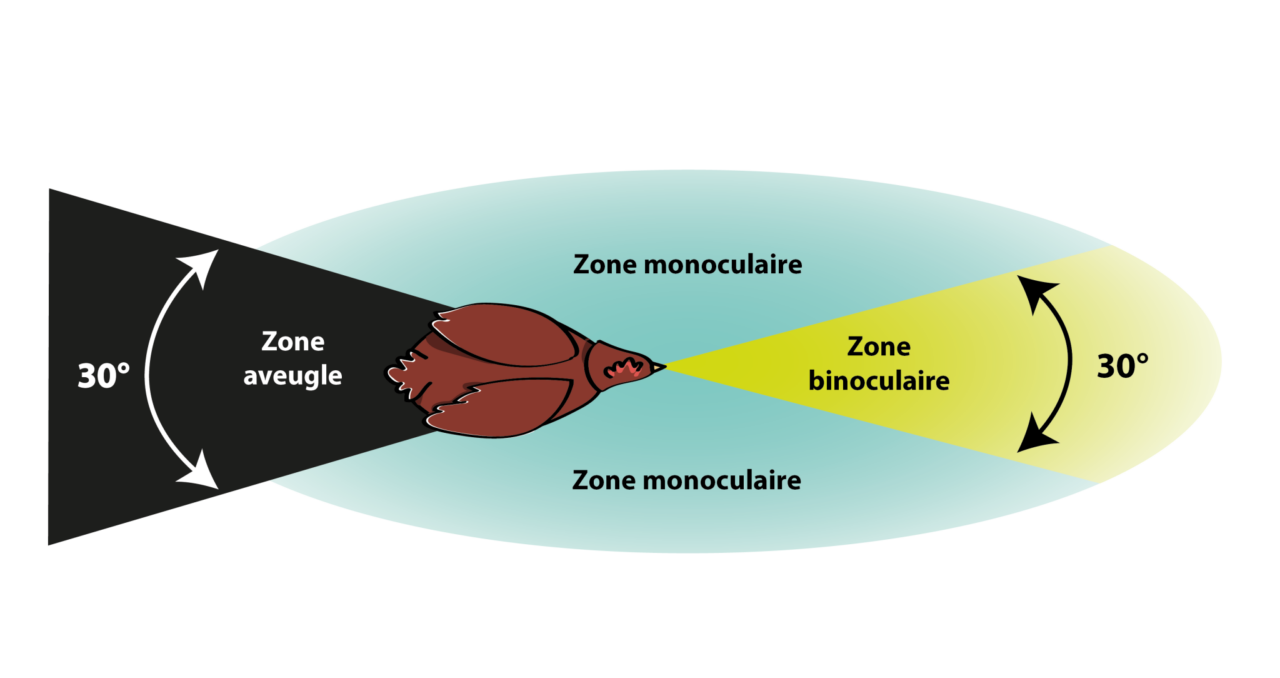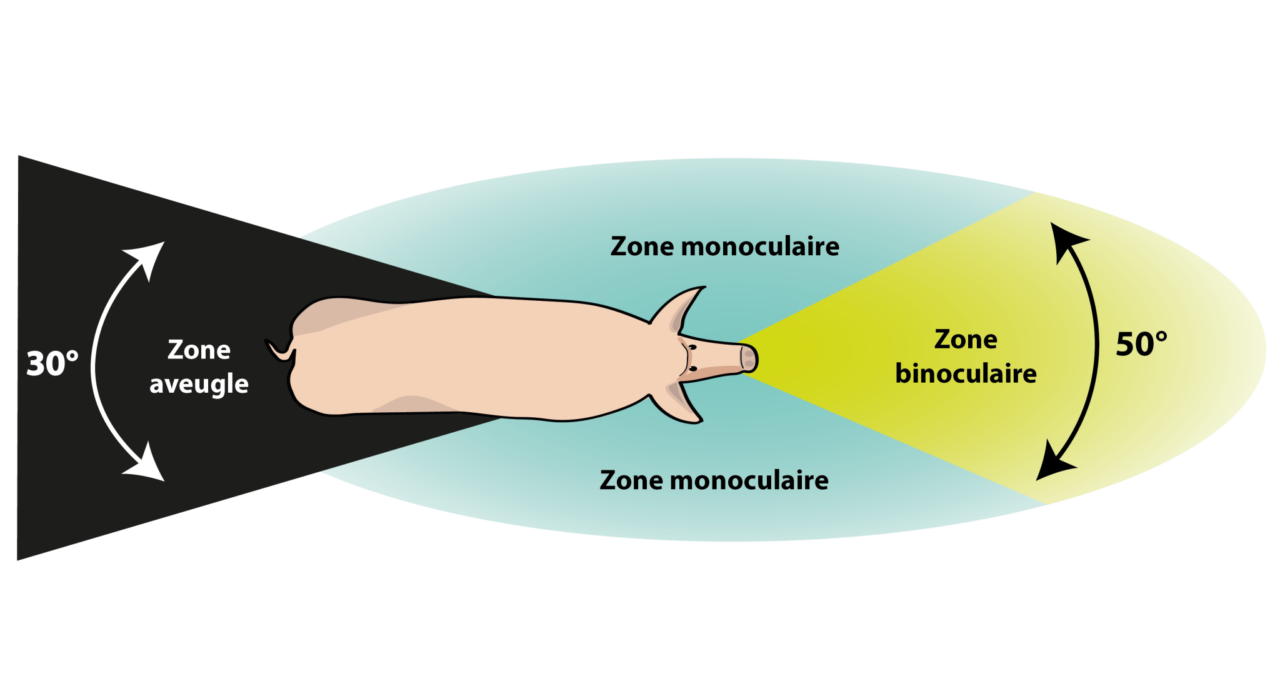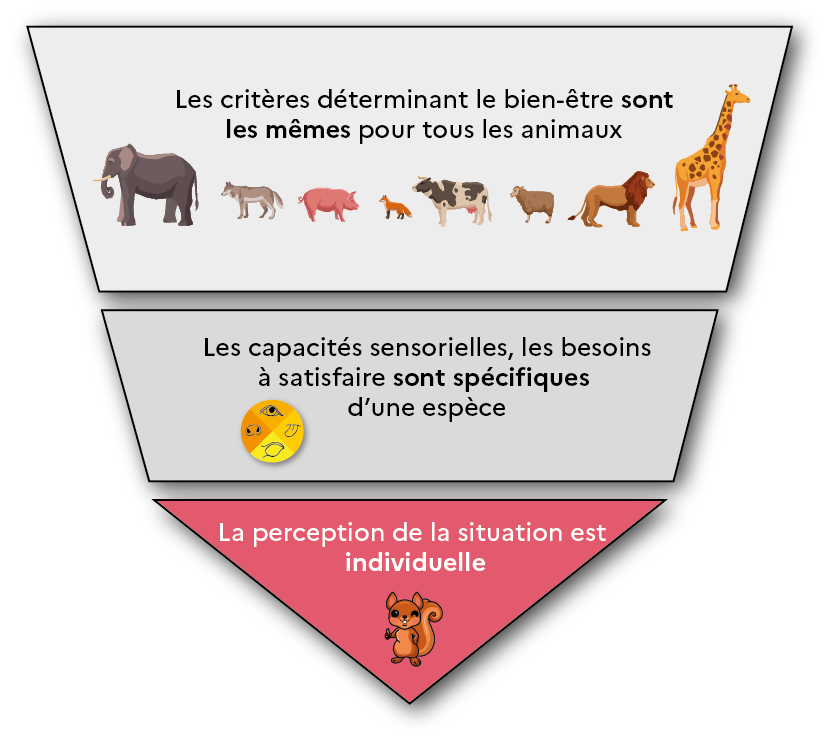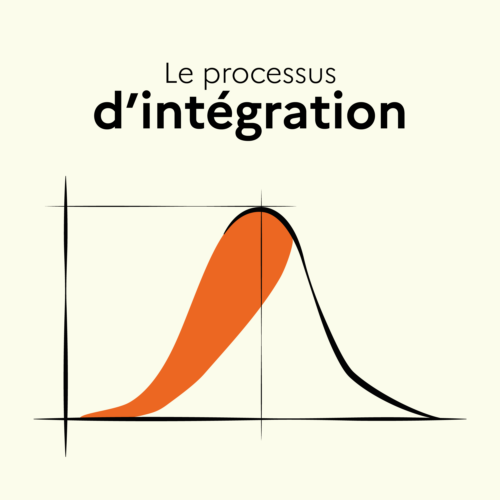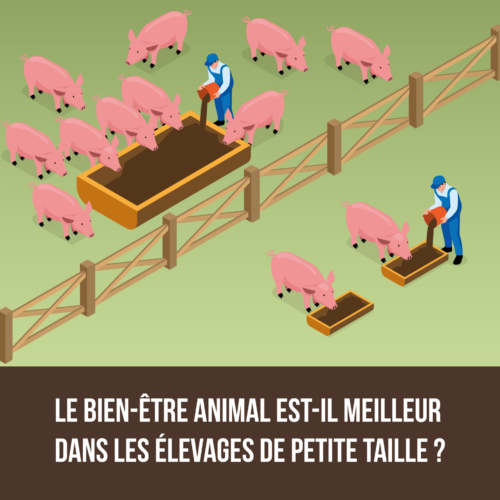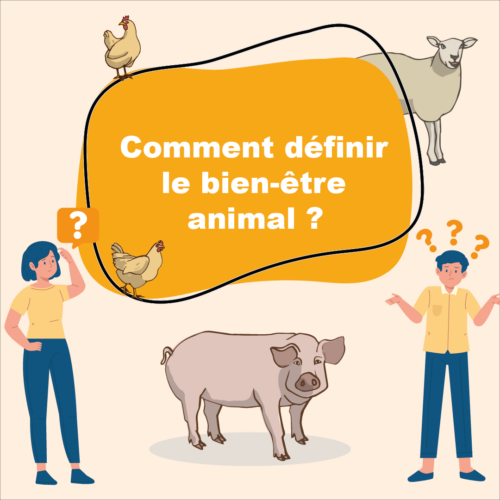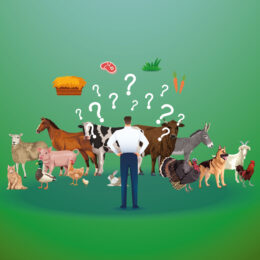

VRAI et FAUX...
On vous explique tout!
à retenir
- La définition générale du bien-être animal et les grands principes d'évaluation sont les mêmes pour tous les animaux
- Chaque espèce a des capacités sensorielles, des besoins (physiologiques, comportementaux) spécifiques
- La perception de la situation reste individuelle ! Chaque animal a des attentes et un vécu qui lui sont propres
La définition du bien-être et les principes permettant de l’évaluer sont les mêmes, quelle que soit l’espèce et/ou l’animal

Les animaux capables de ressentir des émotions et d’avoir des capacités de représentation peuvent éprouver un état de bien-être ou de mal-être.
La définition du bien-être, telle que proposée par l’Anses[3] peut donc être appliquée pour tous les animaux (vertébrés et poissons), sans faire de distinction en fonction des espèces.
Les définitions opérationnelles utilisées pour l’évaluer concrètement sur le terrain sont donc également les mêmes. Le principe des 5 libertés, ou les principes de Welfare Quality®, peuvent être utilisés qu’il s’agisse de porcs charcutiers en élevage, de truies, de poules … et même de carnivores domestiques. Ainsi, l’absence de soif, ou d’inconfort par exemple doivent être satisfaits aussi bien pour les chats à la maison que pour les éléphants dans la savane.

Et pour vérifier si ces libertés sont bien respectées, il est toujours préférable d’utiliser des indicateurs basés sur les animaux pour évaluer le bien-être des animaux !!

En résumé !
Les grands principes du bien-être sont donc les mêmes pour tous les animaux. Cependant, si on regarde un peu plus dans le détail, certains aspects sont propres à chaque espèce, voire à chaque animal.
Les capacités sensorielles, les besoins physiologiques et comportementaux et les indicateurs utilisés sont propres à chaque espèce
Le bien-être des animaux dépend de leur représentation de la situation qu’ils vivent. C’est valable pour tous les animaux… Cette représentation dépend en partie des capacités sensorielles des animaux : quels sont les stimuli qu’ils perçoivent et de quelle manière ? Or en fonction de l’espèce, les capacités sensorielles sont différentes.
Ainsi, pour prendre un exemple connu, si on compare la vision du porc ou de la volaille, le porc a une zone aveugle de 30° en arrière et une zone binoculaire où il distingue bien les reliefs de 50°. Chez la poule, la zone aveugle est de 30° et la zone binoculaire est de 30°. Ces deux espèces ne perçoivent donc pas le monde qui les entoure de la même manière et leur bien-être ne sera pas impacté de la même manière en fonction des stimuli.
De plus, chaque espèce a des besoins physiologiques ou comportementaux qui lui sont spécifiques. Ainsi, le confort thermique des bovins ou des porcs…ou des ours polaires n’est pas le même… une vache n’a pas le même besoin de perchage qu’une poule … et un chien mâtin de Naples n’a pas les mêmes besoins alimentaires qu’un chat persan. Le bien-être dépend de la satisfaction de ces besoins, qui sera propre à chaque espèce.
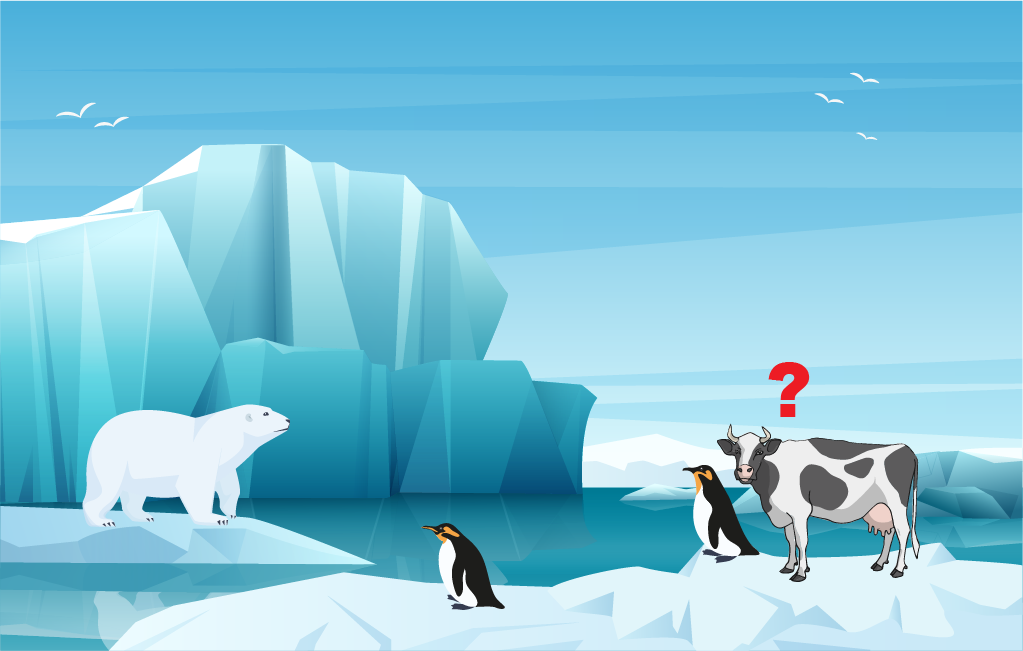

Les risques pouvant être à l’origine d’une dégradation du bien-être seront donc également spécifiques en fonction des espèces. Les risques d’inconfort de couchage d’un cheval ne seront pas les mêmes que ceux d’un canard…. même si le confort de couchage sera important pour les deux.
En conséquence, les indicateurs utilisés pour évaluer le bien-être ne seront pas les mêmes selon les espèces. Les indicateurs pour évaluer l’expression du comportement ne seront pas les mêmes chez le porc (comportement de fouissage par exemple) et chez la volaille (comportement de perchage). Et si un même indicateur peut être utilisé pour différentes espèces, il ne se mesurera pas de la même manière. La note d’état corporel[4] peut ainsi être utilisée pour évaluer l’état d’alimentation chez le bovin ou chez le porc… mais vu la différence morphologique entre les deux espèces, elle ne sera pas mesurée selon les mêmes critères.

En résumé !
Les capacités sensorielles, les besoins à satisfaire sont spécifiques d'une espèce. Les risques à l'origine d'une dégradation du bien-être sont également spécifiques à chaque espèce. Cela suppose de recourir à des indicateurs propres à chaque espèce pour évaluer le bien-être d'un animal.
Le bien-être est individuel !
Les capacités sensorielles ont une base commune au sein d’une même espèce animale… mais peuvent malgré tout varier d’un individu à l’autre. Certains individus ayant par exemple une meilleure acuité visuelle distingueront mieux certains stimuli, ce qui pourra impacter leur bien-être.

Une fois le stimulus perçu par l’animal, la représentation qu’il s’en fait dépend de nombreux facteurs qui lui sont propres, tels que son expérience, son tempérament… A l’approche d’un humain, deux animaux de la même espèce pourront avoir des représentations différentes : l’un peut avoir une représentation négative et avoir un comportement de fuite (s’il a eu une mauvaise expérience préalable avec les humains) alors qu’un autre pourra avoir une représentation positive s’il a eu une bonne expérience préalable.

La représentation de chaque situation est donc propre à chaque individu… et le bien-être est individuel ! c’est la raison pour laquelle il est préférable de parler de « bien-être des animaux » plutôt que de « bien-être animal » qui laisse penser qu’il est le même pour tous.

Cependant, lorsque plusieurs animaux sont présents, comme en élevage par exemple, les améliorations doivent concerner le plus grand nombre et il est rare de pouvoir individualiser en fonction du bien-être de chacun. C’est pour cette raison que le bien-être doit être évalué sur un nombre important d’individus représentant la diversité du troupeau. L’échantillonnage est important pour avoir une idée de l’état de bien-être « moyen » du troupeau.
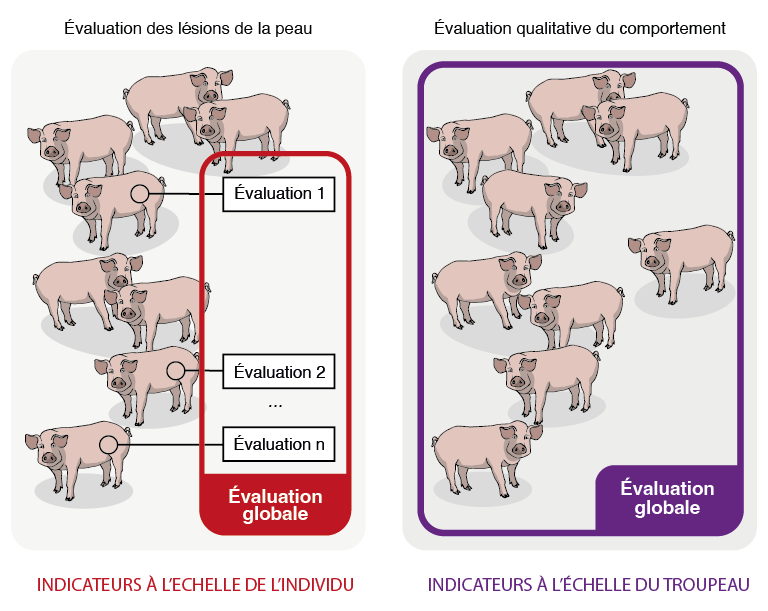
Pour résumer
[1] Pierre Le Neindre, Emilie Bernard, Alain Boissy, Xavier Boivin, Ludovic Calandreau, et al.. La conscience animale. Résumé de l’expertise scientifique collective. Résumé. [Rapport de recherche] INRA. 2017, 8 p. hal-01736383
[2] Les données scientifiques manquent pour généraliser pour les invertébrés même s’il est montré que certains d’entre eux tel que la seiche par exemple peuvent ressentir des émotions (https://anr.fr/Projet-ANR-18-CE02-0022).
[3] https://www.anses.fr/fr/content/l’anses-propose-une-définition-du-bien-être-animal-et-définit-le-socle-de-ses-travaux-de
[4] Qui permet d’évaluer l’état d’engraissement d’un animal
à retenir
- La définition générale du bien-être animal et les grands principes d'évaluation sont les mêmes pour tous les animaux
- Chaque espèce a des capacités sensorielles, des besoins (physiologiques, comportementaux) spécifiques
- La perception de la situation reste individuelle ! Chaque animal a des attentes et un vécu qui lui sont propres

